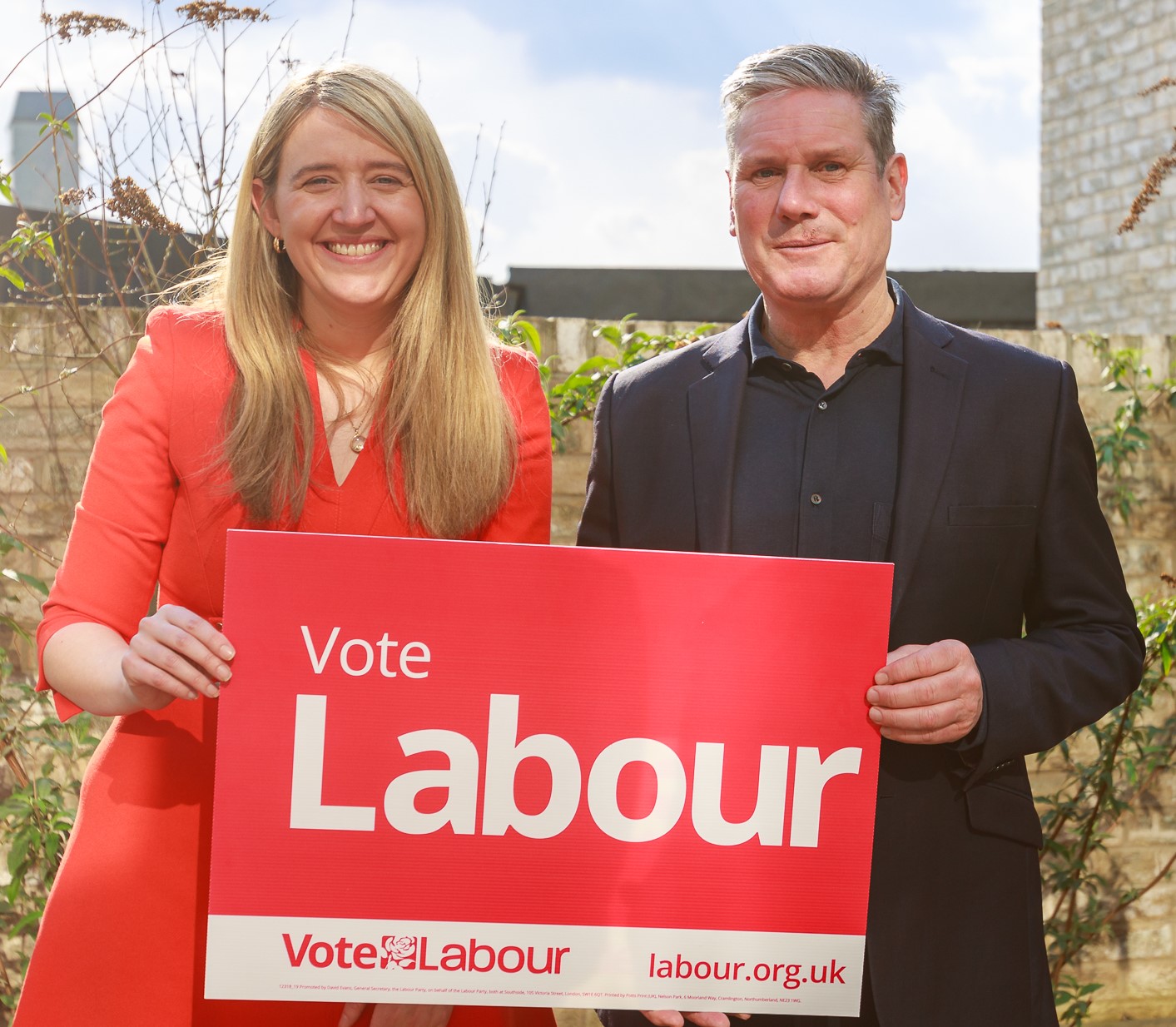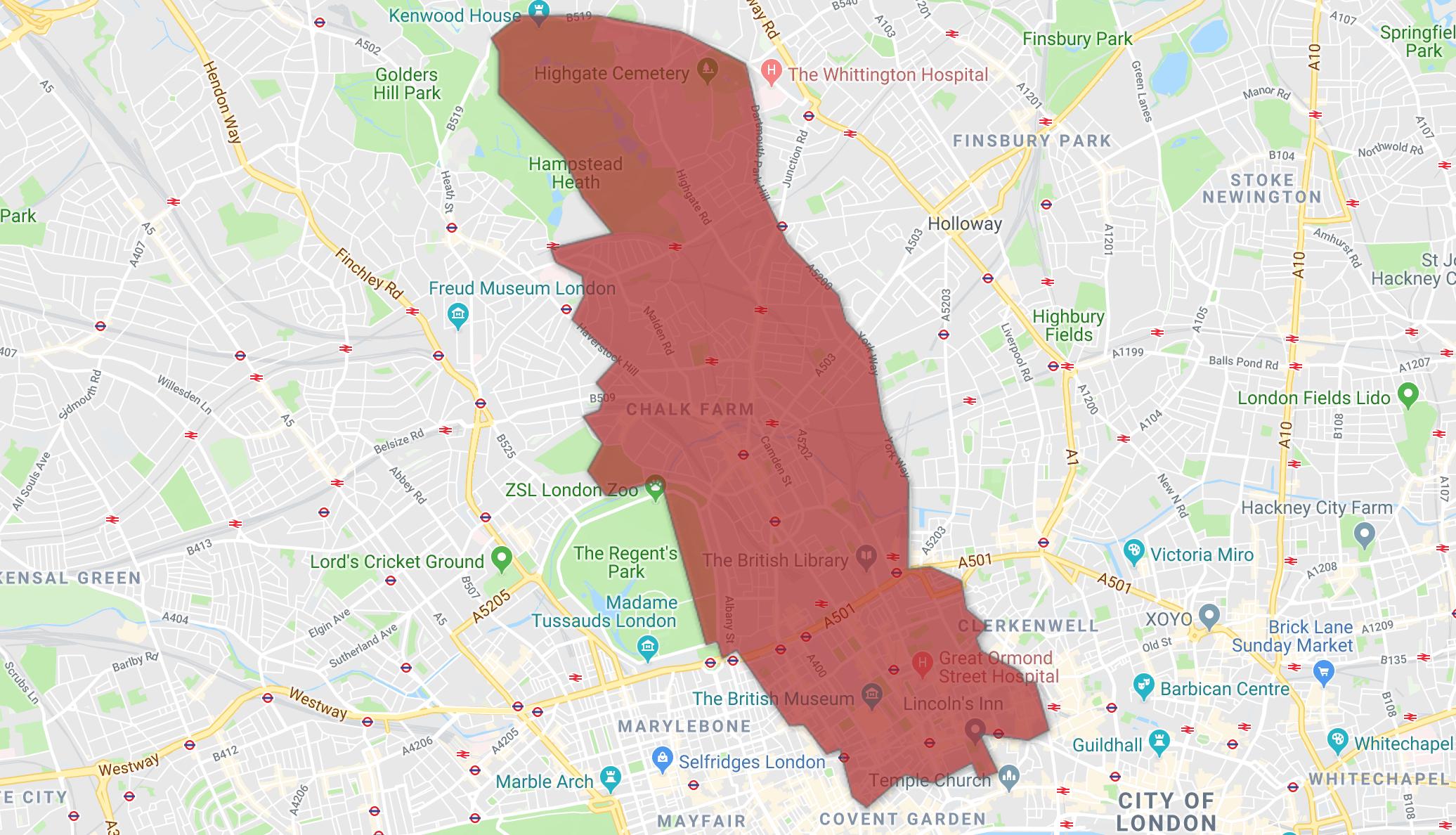A bit about us
The constituency of Holborn and St. Pancras parliamentary was re-created in 2023, following the Boundary Commission recommendations, losing two large northern wards to the new Hampstead and Highgate parliamentary seat. Holborn & St. Pancras Constituency Labour Party (CLP) remains one of the largest in the country with around 2,000 members.
Keir Starmer our MP since 2015, has been the Leader of the Opposition since April 2020.

Keir Starmer, the Leader of the Opposition, is our MP. He works closely with Georgia Gould, the Leader of Camden Council since May 2017.

The constituency boundaries run roughly from Leicester Square up past Regents Park to Kenwoood House, then East across to Highgate Village then South down past St Pancras and Kings Cross Stations to Farringdon, before turning West through Lincolns Inn Fields and Covent Garden. Holborn & St. Pancras is constituted of 13 London Borough of Camden wards: Highgate, Gospel Oak, Kentish Town North, Haverstock, Kentish Town South, Camden Square, Primrose Hill, Camden Town, St Pancras and Somers Town, Regent’s Park, King’s Cross, Bloomsbury, and Holborn and Covent Garden. The remaining London Borough of Camden wards – in the west of the borough – are in the neighbouring constituency of Hampstead and Kilburn.
Since its formation the seat of Holborn & St. Pancras has been represented by only two Members of Parliament (MP) – both Labour. The late Frank Dobson was MP from 1983-2015 (having previously served as MP for Holborn & St. Pancras South from 1979-1983). When Frank retired the members selected Keir Starmer to represent us. In May 2015 Keir was elected MP with 52.9% of the vote, a majority of 17,048 votes. In June 2017 Keir was re-elected MP with 70.1% of the vote, a majority of 30,509 votes. And in the December 2019 election Keir was again re-elected with 64.5% of the vote, a majority of 27,763.
Keir Starmer served as the Shadow Brexit Secretary under Jeremy Corbyn, whom he succeeded as the leader of the Labour Party in April 2020, winning on the first ballot.
Each London Borough of Camden ward is represented by two or three councillors. Currently Labour holds 46 out of the 55 seats across the whole Borough.
Local party organisation
The structures of the various different committees of the Labour Party are sometimes difficult to navigate and some of the terminology and acronyms used in local party meetings can be a little obscure. You should never be embarrassed to ask what an acronym means or what a particular committee does: there is almost certainly at least one other person in the meeting who also doesn’t know.
However, this section of the guide seeks to explains some of the structures and officer positions that you are most likely to come across.
Overview
The structure of the Labour Party mirrors the electoral map of the UK. The smallest unit is the ward which is represented by local councillors. Together a number of wards combine to form constituencies for the purposes of national elections and boroughs who manage local government. The Labour Party has groups and forums that support both these levels.
Branch Labour Parties
The first, and in many ways most important, layer is that of the Branch Labour Party (BLP). Every member of the Labour Party will be a member of their own local Branch, which in most cases matches the local government ward represented by councillors.
If wards are small or have few members, two wards might join together in a single Branch, for example, Bloomsbury and King’s Cross.
Each BLP has a committee responsible for the functioning of the local party activities. Each branch elects at least four executive officers; a chair, who heads up the local party and chairs meetings; a secretary, who ensures meetings are publicised and well run, write the minutes, and often has other responsibilities; a treasurer, who is responsible for the bank account and sometimes fundraising; and a vice-chair who runs meetings if the chair is absent.
Beyond this, there is flexibility about what other positions (if any) are appointed. Other positions which are frequently elected are: campaigns officer, who leads on organising campaign sessions; a membership officer, who is responsible for recruitment and making sure members are involved in the party; and a youth officer, who leads on engaging with young people.
These positions will be elected (or in some cases appointed) at the Annual General Meeting (AGM), and all full members of that Branch Labour Party can stand for election and take part in them. Women’s representation is enshrined in that at least 50% of the officers elected must be women.
The BLP and its committee members are often the main point of contact for members, and how they become actively involved in the Party. Each BLP makes its own decisions as to what activities it will undertake, but it will normally involve a mixture of discussion meetings, campaigning sessions (particularly in the run-up to elections), social events and fundraising. Another key role of the BLP or the ward (in the case of there being a branch made up of more than one ward) is in selecting who the Labour Party puts forward as its candidates to be ward councillors in local elections.
Sending delegates to the Constituency Labour Party General Committee
The other positions which are elected by Branch Labour Parties are their ‘delegates’ to the General Committee (GC) of their Constituency Labour Party (CLP). They are elected at the Branch AGM. The number of delegates each ward gets will depend on the number of members they have, and each branch delegation must be gender balanced. The Secretary of a BLP is also automatically a member of the General Committee and of its Executive Committee (EC) – to make sure they are aware of decisions made there.
GC delegates are not bound by the views of their fellow branch members in how they vote, but they will normally take account of them.
Constituency Labour Party
Every member of the Labour Party is also a member of their Constituency Labour Party (CLP), which in England mirrors the area represented by a Member of Parliament.
The structure of the CLP is in many ways similar to that of the BLP, except covering a wider area and with more members. The General Committee of this CLP has a chair, two vice-chairs, secretary, treasurer, women’s officer, youth officer and BAME officer – of which at least three must be women. There are a number of other officers to assist with key functions, and often more than you would find at the BLP level.
These positions are also elected, with the election happening at the CLP Annual General Meeting among the delegates sent by branches, but also those delegates sent by unions and socialist societies and the Co-operative Party. You have to be a delegate to the General Committee to stand for a position as a CLP officer.
While many day-to-day operation and administrative decisions are made by an ‘Executive Committee’ (EC) (made up of the officers of the CLP and representatives from the branches, unions, socialist societies and the Cooperative Party), major decisions and positions as to policy would normally be made by the General Committee – the primary decision-making body of the CLP.
In Holborn & St. Pancras, and in many other constituencies, all members can attend meetings and participate in discussions, but only General Committee delegates can take part in votes.
Issues decided by All Members of the Constituency Labour Party
However, some decisions are made at CLP meetings by all members of the Labour Party who live in the CLP. This includes who the CLP ‘nominates’ as their chosen candidate for national party Leader and Deputy Leader. This is more often than not an endorsement, and the final decision will be made in a postal and online ballot of all members. In some instances, such as the selection for London Mayoral candidate, prospective candidates must pass a threshold of constituency nominations in order to be on the ballot paper.
All members of the CLP are able to take part in votes about who the party selects as its candidate for Parliament when there is a vacancy.
Attending Annual Conference as a Visitor or Delegate
Holborn & St. Pancras CLP members usually elect four delegates to the Labour Party’s Annual Conference who include at least two women, one youth member (under 27) and one BAME member. The CLP delegates are invited to report back to the GC on their experience at conference. All members are able to buy a pass to attend conference to observe conference proceedings and to participate in fringe events.
Local Campaign Forum
The Local Campaign Forum is made up of delegates from CLPs, Constituency Campaign Officers and other elected positions. The LCF’s primary aim is to organise for local elections in Camden. It co-ordinates the campaign activities of Camden branches to secure the election of local Labour candidates, recruits party members to stand for local elections and compiles the panel of candidates for those elections. It also works with the local Labour Group to encourage a role for branches, members and affiliates in local government policy and to feed ideas into the Party’s local manifesto and policy-making process.
Camden Council Labour Group
The Camden Labour Group is made up of all Labour party councillors and is the forum for discussing council issues and developing local council policy.
Want to get involved or ask a question?
Contact the Holborn & St Pancras CLP team using the form below.

